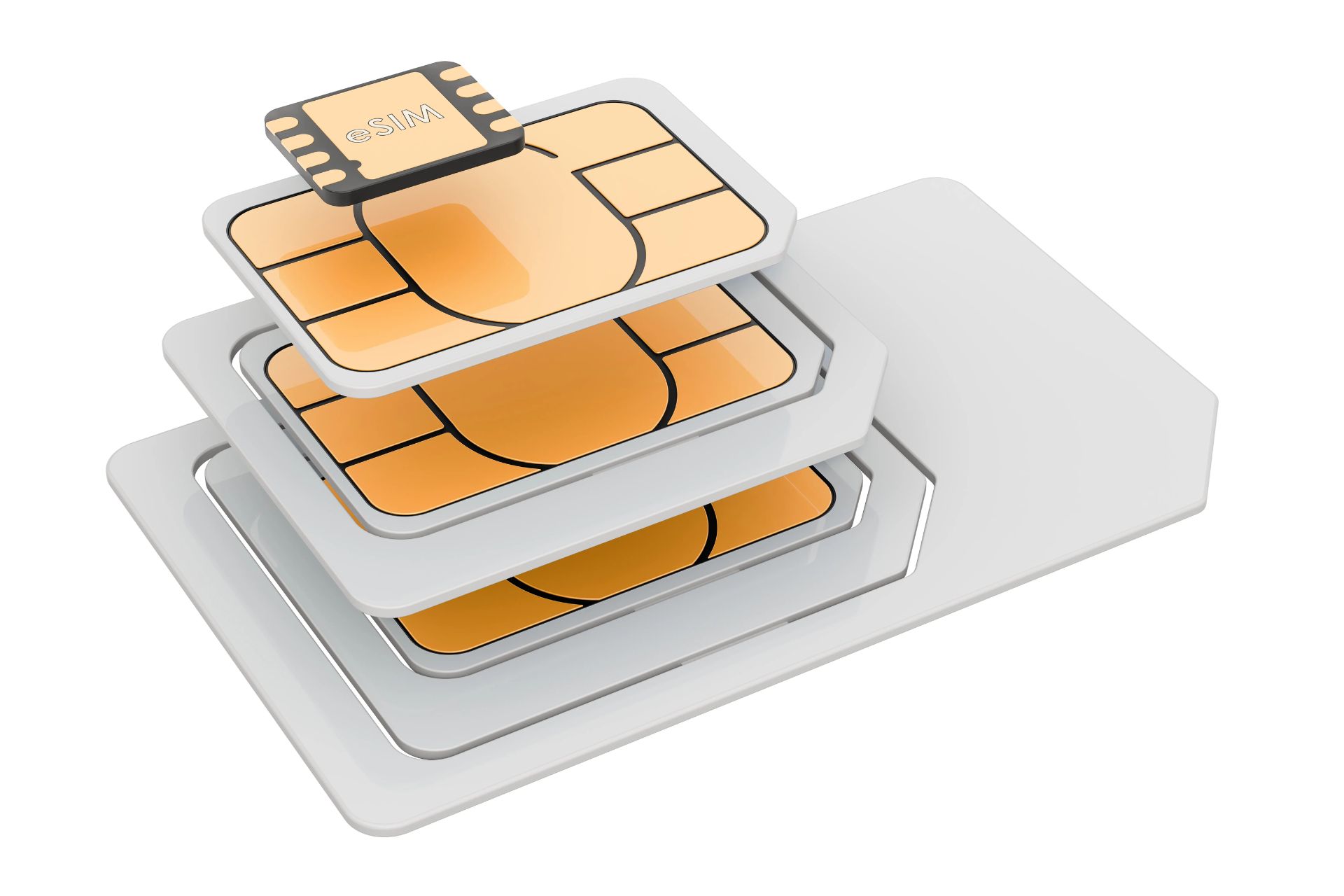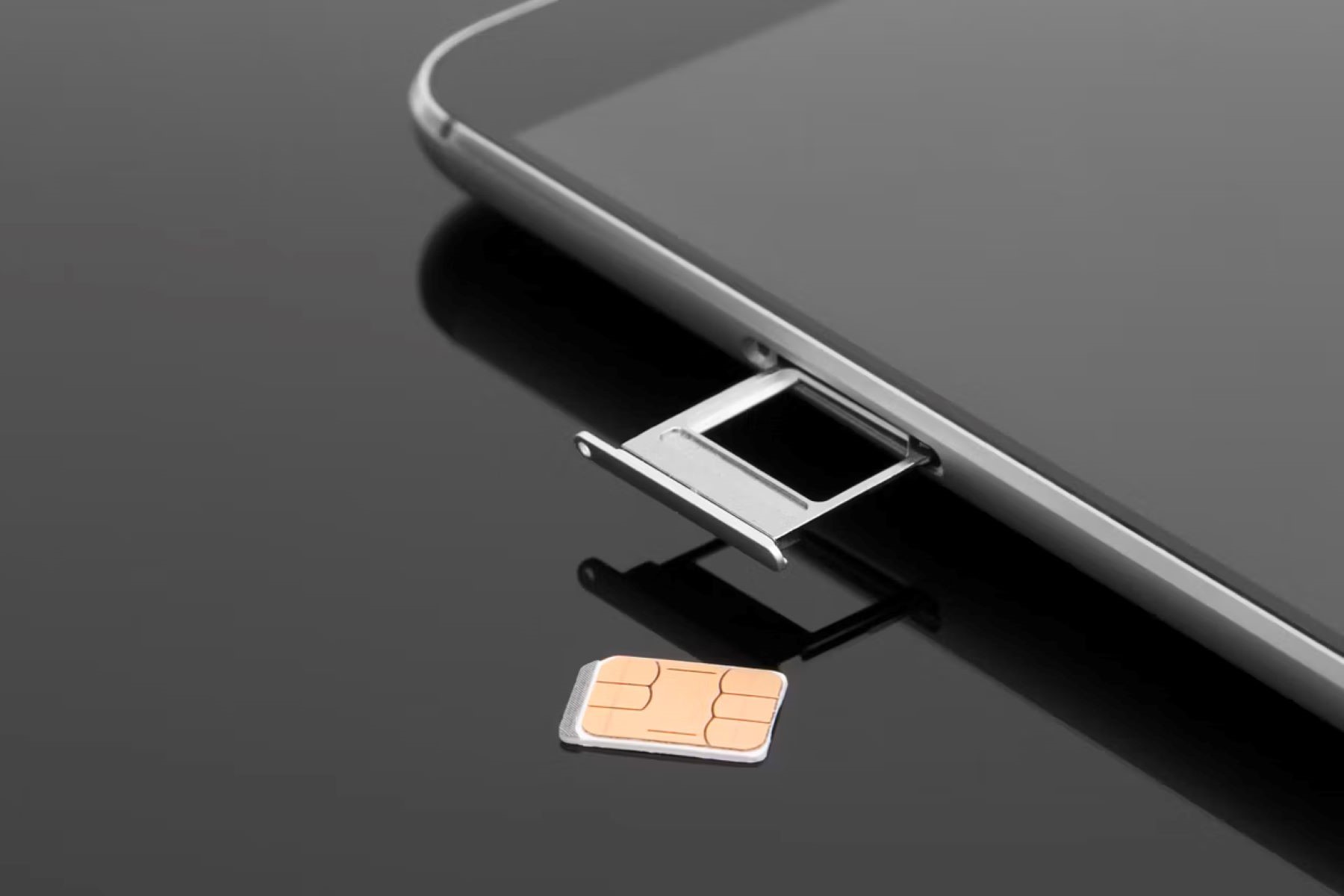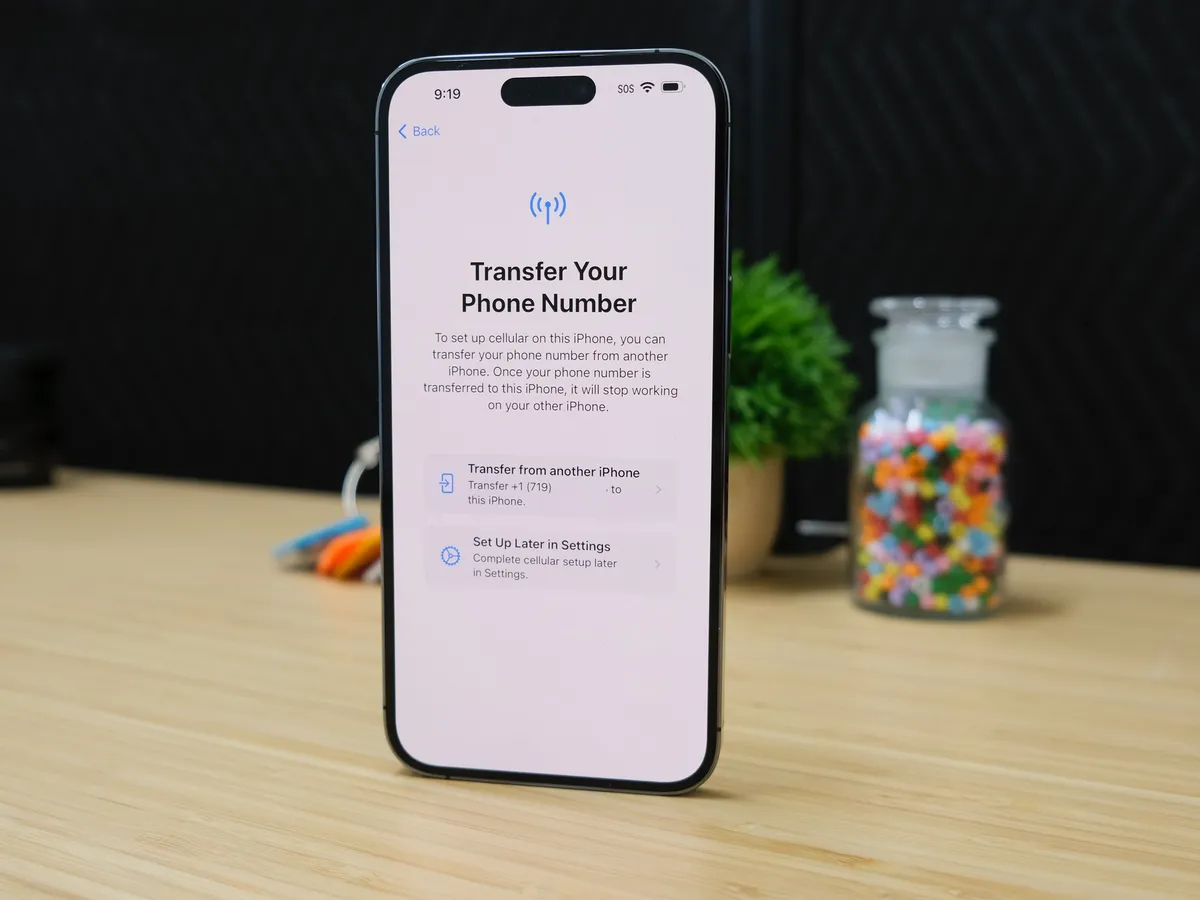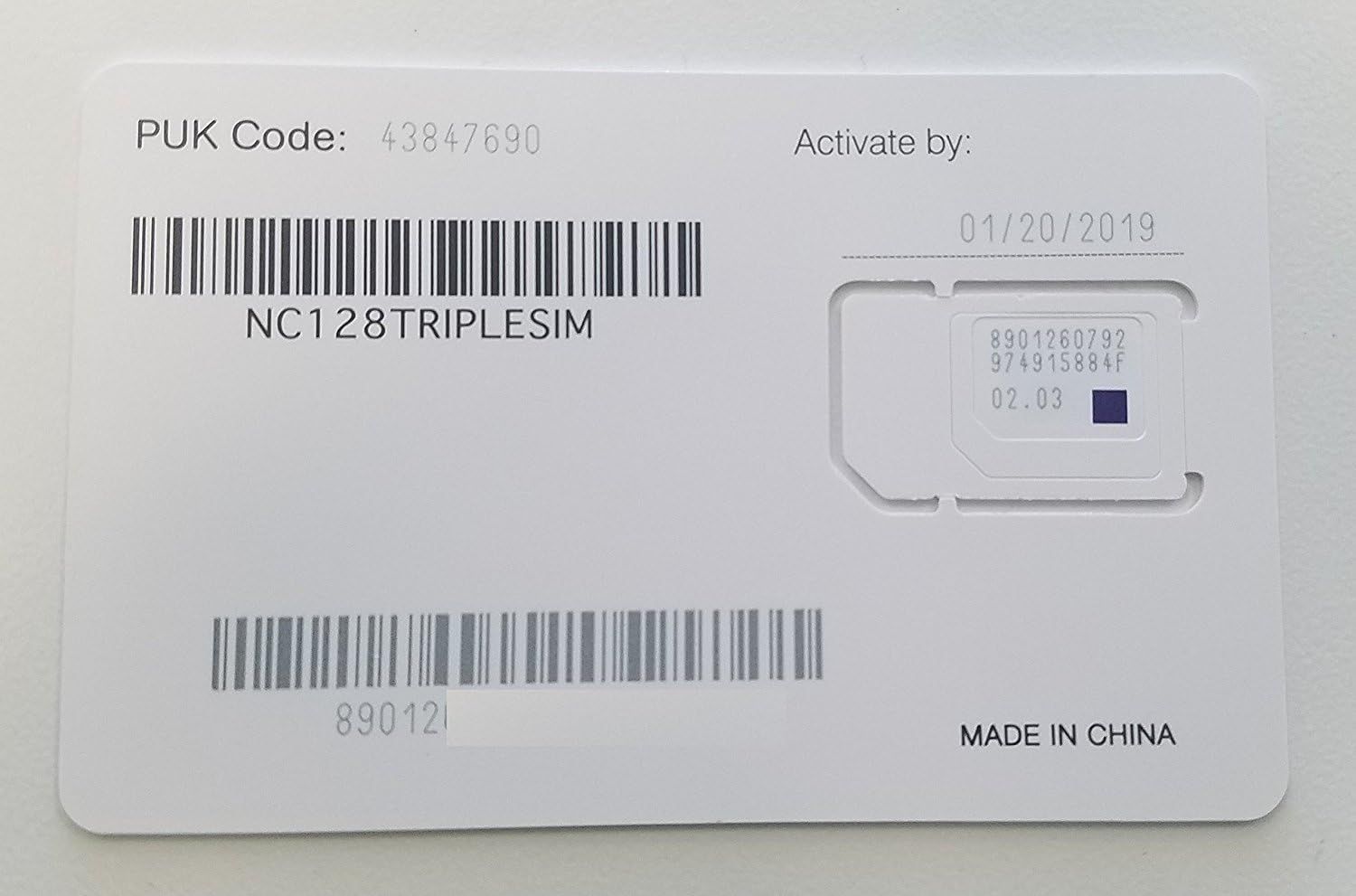What is a Virtual SIM Card?
A virtual SIM card, also known as an eSIM (embedded SIM), is a digital version of the traditional physical SIM card found in mobile devices. Unlike a physical SIM card, which is a small, removable chip, a virtual SIM card is integrated directly into the device's hardware or can be downloaded and activated remotely. This innovative technology enables users to access cellular networks and make calls, send messages, and use mobile data without the need for a physical SIM card.
Virtual SIM cards operate on the same principles as traditional SIM cards, allowing users to connect to a mobile network and access telecommunication services. However, the key distinction lies in their flexibility and convenience. With a virtual SIM card, users can easily switch between mobile network operators without needing to physically swap out SIM cards. This level of agility and adaptability is particularly advantageous for frequent travelers or individuals who require multiple phone numbers for different purposes.
Furthermore, the compact nature of virtual SIM cards eliminates the hassle of handling physical SIM cards, reducing the risk of loss or damage. Additionally, the absence of a physical component means that devices can be designed with sleeker, more streamlined profiles, contributing to a more seamless and integrated user experience.
Virtual SIM cards have gained significant traction in the mobile industry due to their potential to revolutionize the way mobile devices connect to cellular networks. As the technology continues to evolve, virtual SIM cards are poised to play a pivotal role in shaping the future of mobile communications, offering users greater flexibility, convenience, and connectivity.
In essence, a virtual SIM card represents a paradigm shift in the realm of mobile connectivity, paving the way for a more agile, user-centric approach to accessing telecommunication services.
Advantages of Using Virtual SIM Cards
-
Flexibility and Convenience: Virtual SIM cards offer unparalleled flexibility, allowing users to switch between mobile network operators without the need to physically swap out SIM cards. This level of agility is particularly beneficial for frequent travelers, as it eliminates the hassle of acquiring and managing multiple physical SIM cards.
-
Cost-Effectiveness: By leveraging virtual SIM technology, users can avoid exorbitant roaming charges when traveling internationally. Instead of purchasing local SIM cards or activating expensive roaming plans, users can simply switch to a local mobile network via their virtual SIM, enabling significant cost savings.
-
Space-Saving Design: The absence of a physical SIM card slot in devices equipped with virtual SIM technology allows for sleeker, more compact designs. This not only contributes to a more aesthetically pleasing form factor but also enhances the overall user experience by streamlining device profiles.
-
Enhanced Security: Virtual SIM cards offer an added layer of security, as they are not susceptible to physical theft or damage. This reduces the risk of unauthorized SIM card swaps and provides peace of mind to users concerned about the security of their mobile communications.
-
Multi-Number Support: Virtual SIM technology enables users to have multiple phone numbers on a single device, catering to diverse communication needs. Whether for personal, business, or travel purposes, the ability to manage multiple numbers on a single device enhances convenience and organization.
-
Remote Activation and Management: Virtual SIM cards can be remotely activated and managed, eliminating the need for physical interaction with the device. This feature is particularly advantageous for enterprises managing a large fleet of devices, as it streamlines the provisioning and management of mobile connectivity.
-
Environmental Impact: By reducing the reliance on physical SIM cards, virtual SIM technology contributes to environmental sustainability. The production and disposal of physical SIM cards entail environmental costs, which can be mitigated through the adoption of virtual SIM solutions.
-
Future-Proofing: As mobile technology continues to evolve, virtual SIM cards are well-positioned to adapt to emerging trends and standards. This future-proofing aspect ensures that users can seamlessly transition to new network technologies and standards without the need for physical SIM replacements.
In essence, the advantages of using virtual SIM cards underscore their transformative potential in redefining the way users connect to mobile networks and manage their telecommunication needs. As the technology matures and becomes more widely adopted, these advantages are poised to play a pivotal role in shaping the future of mobile communications.
Disadvantages of Using Virtual SIM Cards
While virtual SIM cards offer a myriad of benefits, it's important to acknowledge the potential drawbacks associated with this innovative technology. Understanding the limitations of virtual SIM cards can provide users with a comprehensive perspective when evaluating their suitability for specific use cases. Here are some key disadvantages to consider:
-
Limited Device Compatibility: One of the primary challenges associated with virtual SIM cards is the limited compatibility with older devices. While newer smartphones and mobile devices increasingly support eSIM technology, older models may not have the necessary hardware or software capabilities to utilize virtual SIM cards. This can pose a barrier for users who wish to transition to eSIM-enabled devices but are constrained by their existing hardware.
-
Dependency on Service Providers: The adoption of virtual SIM technology may introduce a level of dependency on service providers for activation and management. Unlike traditional physical SIM cards that can be easily swapped between devices, virtual SIM cards are tied to specific service providers and may require their approval for activation or changes. This can limit the flexibility and autonomy that users have come to expect with physical SIM cards.
-
Limited Global Availability: While virtual SIM technology is gaining momentum, its global availability is not yet ubiquitous. Some regions may have limited support for eSIM activation and compatible mobile networks, which can restrict the seamless adoption of virtual SIM cards for international travelers or users operating in diverse geographic locations.
-
Potential Connectivity Issues: Virtual SIM cards rely on stable network connectivity for activation and management. In scenarios where users encounter network disruptions or technical issues, the ability to remotely access and manage virtual SIM cards may be impeded. This can result in inconvenience and potential service interruptions, especially in areas with limited network coverage.
-
Complex Activation Processes: The activation and setup of virtual SIM cards may involve more complex procedures compared to traditional SIM cards. Users may need to navigate through specific device settings or engage with service providers to initiate the eSIM provisioning process, which can be perceived as less intuitive or straightforward for some individuals.
-
Security and Privacy Concerns: While virtual SIM cards offer enhanced security features, they are not immune to potential cybersecurity threats. As digital entities, virtual SIM cards may be susceptible to hacking attempts or unauthorized access, raising concerns about the privacy and integrity of user data stored within the eSIM environment.
It is essential to consider these disadvantages alongside the advantages of virtual SIM cards to make informed decisions regarding their adoption. As the technology continues to evolve, addressing these limitations will be pivotal in enhancing the overall user experience and expanding the accessibility of virtual SIM solutions.
How to Use a Virtual SIM Card
Using a virtual SIM card involves a streamlined process that leverages the digital nature of eSIM technology to enable seamless connectivity and telecommunication services. The following steps outline how users can effectively utilize a virtual SIM card:
-
Device Compatibility: Ensure that your mobile device supports virtual SIM technology, either through built-in eSIM functionality or compatibility with eSIM activation.
-
eSIM Activation: If your device is eSIM-enabled, navigate to the device settings and locate the eSIM or cellular settings menu. This may vary depending on the specific device and operating system. Look for options related to adding a new cellular plan or activating an eSIM.
-
Service Provider Selection: Choose the desired mobile network operator or service provider from the available options. This may involve scanning a QR code provided by the service provider or entering specific activation details, such as an activation code or identifier.
-
Activation Confirmation: Follow the prompts to confirm and finalize the eSIM activation process. This may involve validating the selected cellular plan, confirming terms of service, and ensuring that the eSIM is successfully provisioned and activated on the device.
-
Profile Management: Once the eSIM is activated, users can manage multiple eSIM profiles if supported by the device. This feature allows for the storage and seamless switching between different virtual SIM cards, each associated with distinct mobile network subscriptions or phone numbers.
-
Telecommunication Usage: With the virtual SIM card successfully activated and configured, users can make calls, send messages, and access mobile data using the associated mobile network. The functionality is akin to that of a traditional physical SIM card, offering comprehensive telecommunication capabilities.
-
Flexibility and Switching: Enjoy the flexibility of seamlessly switching between different eSIM profiles or mobile network subscriptions directly from the device settings. This level of agility is particularly advantageous for users who require multiple phone numbers or frequently switch between different mobile network operators.
By following these steps, users can harness the full potential of virtual SIM technology, unlocking a new realm of flexibility, convenience, and connectivity in the realm of mobile communications. As the adoption of eSIM technology continues to expand, the process of using virtual SIM cards is expected to become even more intuitive and ubiquitous across a diverse range of mobile devices and service providers.
Virtual SIM Card Providers
As the demand for virtual SIM cards continues to grow, a diverse array of mobile network operators and eSIM service providers have emerged to cater to the evolving needs of users seeking digital connectivity solutions. These virtual SIM card providers offer a range of eSIM plans, services, and capabilities, empowering users to seamlessly transition to the digital realm of mobile communications. Here are some prominent virtual SIM card providers making significant strides in the eSIM landscape:
1. GigSky
GigSky is a renowned eSIM provider that specializes in global connectivity solutions for travelers and international users. With a focus on simplifying mobile connectivity across borders, GigSky offers eSIM plans tailored for frequent travelers, providing access to multiple mobile networks in various countries without the need for physical SIM cards. This flexibility and convenience make GigSky a preferred choice for individuals seeking seamless international connectivity.
2. Truphone
Truphone is a leading eSIM provider that emphasizes the convergence of connectivity and technology to deliver enhanced mobile experiences. Truphone's eSIM solutions are designed to cater to businesses and enterprises, offering scalable eSIM management platforms and comprehensive connectivity options for corporate fleets of devices. The emphasis on enterprise-grade eSIM solutions positions Truphone as a key player in the realm of virtual SIM card provisioning for business use cases.
3. Ubigi
Ubigi, a brand of Transatel, is at the forefront of eSIM innovation, providing users with versatile eSIM plans and connectivity solutions. Ubigi's eSIM offerings encompass a wide range of use cases, including consumer mobile connectivity, IoT (Internet of Things) deployments, and automotive applications. The breadth of Ubigi's eSIM portfolio reflects its commitment to addressing diverse connectivity needs across consumer and enterprise domains.
4. eSIM.net
eSIM.net is a prominent eSIM provider that prioritizes accessibility and user-friendly eSIM solutions. With a focus on empowering users to easily adopt eSIM technology, eSIM.net offers a seamless eSIM activation process and a variety of eSIM plans tailored to specific regions and usage scenarios. This emphasis on user accessibility and simplicity positions eSIM.net as a notable player in the consumer eSIM market.
5. Airalo
Airalo is a pioneering eSIM marketplace that revolutionizes the way users access virtual SIM cards by offering a curated selection of eSIM plans from various mobile network operators worldwide. Through Airalo's platform, users can discover and purchase eSIM plans for specific destinations or global coverage, enabling unparalleled flexibility and choice in managing virtual SIM cards for international travel and local connectivity needs.
These virtual SIM card providers exemplify the diverse ecosystem of eSIM offerings, catering to a spectrum of user requirements spanning international travel, enterprise deployments, consumer connectivity, and IoT applications. As the eSIM landscape continues to evolve, these providers play a pivotal role in driving the adoption and accessibility of virtual SIM technology, shaping the future of mobile connectivity with their innovative eSIM solutions.
Security and Privacy Concerns with Virtual SIM Cards
The widespread adoption of virtual SIM cards has ushered in a new era of mobile connectivity, offering users unparalleled flexibility and convenience. However, as with any digital technology, virtual SIM cards are accompanied by inherent security and privacy considerations that merit careful attention.
One of the primary concerns pertains to the digital nature of virtual SIM cards, which introduces potential vulnerabilities related to cybersecurity threats and unauthorized access. Unlike physical SIM cards, which are tangible and require direct physical access to manipulate, virtual SIM cards exist in a digital realm, making them susceptible to various forms of cyber attacks, including hacking, identity theft, and unauthorized eSIM provisioning. As a result, users must remain vigilant and implement robust security measures to safeguard their virtual SIM cards from potential exploitation.
Furthermore, the centralized management of virtual SIM cards by service providers raises privacy concerns regarding the collection and storage of user data. Service providers that facilitate eSIM activation and management may have access to sensitive user information, including device identifiers, network usage patterns, and location data. The responsible handling of this data is paramount to ensure user privacy and prevent unauthorized exploitation for targeted advertising, surveillance, or other invasive purposes.
Another aspect of security and privacy concerns with virtual SIM cards revolves around the potential for eSIM cloning and unauthorized duplication. While physical SIM cards can be cloned, the digital nature of virtual SIM cards introduces new complexities and risks associated with unauthorized replication. If not adequately protected, eSIM profiles could be compromised, leading to unauthorized usage, identity fraud, and potential financial repercussions for affected users.
Moreover, the reliance on network connectivity for the remote activation and management of virtual SIM cards introduces the risk of service disruptions, network outages, or technical vulnerabilities that may impact the availability and integrity of eSIM functionality. This dependence on network connectivity underscores the importance of robust infrastructure and contingency measures to mitigate potential service interruptions and ensure the seamless operation of virtual SIM cards.
Addressing these security and privacy concerns requires a multi-faceted approach, encompassing stringent cybersecurity protocols, transparent data privacy practices, user education on best security practices, and ongoing collaboration between industry stakeholders to fortify the resilience of virtual SIM technology against emerging threats.
In essence, while virtual SIM cards offer transformative benefits, it is imperative to proactively address the associated security and privacy considerations to foster trust, resilience, and the responsible evolution of eSIM technology in the realm of mobile communications.
Future of Virtual SIM Card Technology
The future of virtual SIM card technology holds immense promise and potential, poised to shape the trajectory of mobile communications and connectivity in the digital age. As eSIM adoption continues to gain momentum and the capabilities of virtual SIM cards evolve, several compelling trends and advancements are expected to define the future landscape of eSIM technology.
1. Proliferation Across Devices
The proliferation of eSIM functionality across a broad spectrum of devices is anticipated to be a defining feature of the future virtual SIM card landscape. Beyond smartphones and tablets, emerging IoT (Internet of Things) devices, wearables, connected vehicles, and smart appliances are poised to integrate eSIM technology, enabling seamless connectivity and communication across diverse ecosystems.
2. Enhanced Interoperability
Future advancements in virtual SIM card technology are expected to prioritize enhanced interoperability and cross-compatibility between different eSIM-enabled devices and mobile network operators. This interoperability will empower users to effortlessly transition between devices and leverage a unified virtual SIM ecosystem, fostering a more cohesive and user-centric experience.
3. Integration with 5G Networks
The advent of 5G networks will catalyze the convergence of virtual SIM cards and high-speed, low-latency connectivity, unlocking new opportunities for eSIM-enabled devices. The integration of virtual SIM technology with 5G networks will enable enhanced mobile experiences, including augmented reality (AR), virtual reality (VR), real-time IoT applications, and ultra-fast multimedia streaming.
4. Ecosystem Expansion
The future of virtual SIM card technology will witness the expansion of eSIM ecosystems, encompassing a diverse array of service providers, device manufacturers, and industry stakeholders. This expansion will foster a vibrant eSIM marketplace, offering users a wide selection of eSIM plans, tailored connectivity solutions, and innovative use cases spanning consumer, enterprise, and IoT domains.
5. Security and Privacy Advancements
Anticipated advancements in eSIM security and privacy measures will play a pivotal role in fortifying the resilience of virtual SIM card technology. Enhanced encryption protocols, biometric authentication, secure provisioning mechanisms, and robust data privacy frameworks will bolster the trust and integrity of eSIM solutions, mitigating potential cybersecurity risks and safeguarding user privacy.
6. Seamless Global Roaming
The future of virtual SIM card technology is poised to revolutionize global roaming experiences, offering users seamless access to international mobile networks without the need for physical SIM card swaps. By leveraging eSIM technology, travelers will benefit from simplified, cost-effective roaming solutions, eliminating the complexities associated with acquiring and managing local SIM cards while abroad.
In essence, the future of virtual SIM card technology is characterized by a convergence of innovation, accessibility, and user-centricity, laying the foundation for a dynamic and interconnected eSIM ecosystem. As eSIM adoption continues to accelerate and technology advancements unfold, virtual SIM cards are set to redefine the boundaries of mobile connectivity, empowering users with unparalleled flexibility, convenience, and transformative mobile experiences.
























